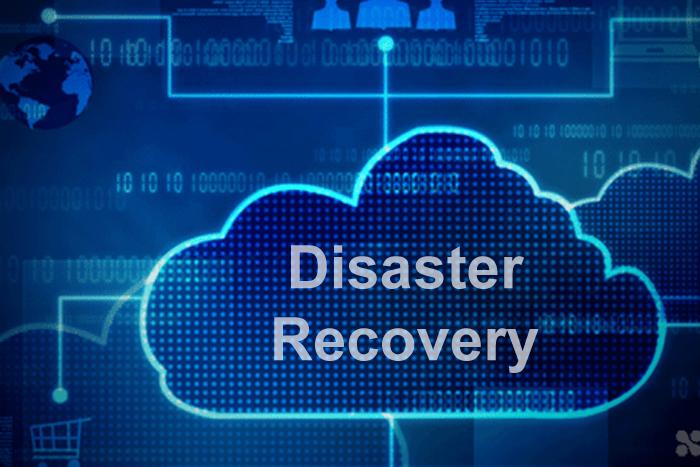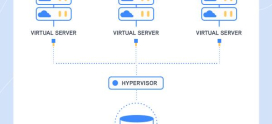
How to Choose the Right Disaster Recovery Solution
Disasters, whether natural or man-made, are unpredictable and can wreak havoc on our lives and businesses. Have you ever sat down and thought about what would happen if you lost all your data overnight? Or if a flood or fire disrupted your business operations? It’s a daunting thought, isn’t it? You’re not alone in feeling this way – many people worry about how to bounce back from unexpected calamities. This is where a disaster recovery solution comes into play. These solutions can protect you, your data, and your livelihood from potential disasters. But with so many options available, how do you choose the right one? Let’s explore together how you can make this crucial decision smoothly.
Choosing the right disaster recovery solution can feel overwhelming. You might think, “Where do I even begin?” Understanding the challenges you face is the first step. Whether it’s data loss, downtime, or compliance issues, the impacts of a disaster can be severe. The good news is that there are practical steps you can take to ensure that you have the right recovery solution tailored to your specific needs. So, grab a cup of coffee and let’s dive into the essentials of selecting the right disaster recovery solution for you.
Understanding Disaster Recovery Solutions
Before we dissect the nuances of selecting a disaster recovery solution, let’s first clarify what a disaster recovery solution entails. In essence, it is a strategy that helps organizations quickly recover from disruptive events. Think of it as a safety net – one that catches you when you fall. It includes everything from backing up your data to having a contingency plan in place.
The Importance of Disaster Recovery
The significance of a strong disaster recovery plan can’t be overstated. Data outages can lead to lost revenue, diminished productivity, and ultimately, a tarnished reputation. By investing in a robust plan today, you’re not just safeguarding your data; you’re also ensuring that you can continue providing value to your customers. According to a study by the National Cyber Security Alliance, 60% of small businesses that suffer a data breach go out of business within six months. This statistic alone highlights how critical a solid recovery plan is.
Assessing Your Needs
Now that we’ve established a foundation, let’s move on to evaluating your specific needs. Assessing your requirements is akin to creating a recipe – you need to know ingredients and quantities before you start cooking.
Business Impact Analysis
The first step in this assessment is to conduct a Business Impact Analysis (BIA). Understanding which assets are critical for your operations is vital. Ask yourself the following: What data is irreplaceable? How long can your business survive without specific information? Consider the financial, operational, and reputational impacts of downtime.
Regulatory Compliance Requirements
Don’t forget to examine your industry’s regulatory compliance requirements. Some sectors are subject to strict data protection mandates. Ensure that your chosen solution complies with relevant regulations to avoid potential fines or legal complications.
Key Features to Look For
Once you’ve assessed your needs, the next step is to identify key features that are important to you. Like a runner choosing the right sneaker, you must consider comfort, support, and fit. Here are some essential features to keep in mind:
- Data Security: Your chosen solution must ensure that your data is backed up securely and is protected from breaches.
- Recovery Speed: How quickly can you access your data and resume operations? Speed is crucial in minimizing damage.
- Scalability: Your solution should grow with you. As your business expands, so should your disaster recovery plan.
- Customer Support: What level of support can you expect? Prompt and reliable help can make all the difference in crisis situations.
- Testing and Maintenance: Regularly testing and updating your disaster recovery plan is essential for ensuring its effectiveness.
Types of Disaster Recovery Solutions
Disaster recovery solutions come in different forms, akin to picking the right kind of umbrella for rain. Here are a few options you can consider:
Backup Solutions
These solutions involve regularly saving data to an offsite location or the cloud. If a disaster occurs, you can easily restore your information. Companies like DarazHost offer reliable backup solutions that combine affordability with robust security measures.
Cloud Disaster Recovery
The cloud has revolutionized data recovery, making it easier for businesses to access their data from anywhere. Look for a provider that offers redundancy, meaning your data is copied in multiple locations.
Cold and Hot Sites
Cold sites are backup locations equipped with power and networking but not live systems. Hot sites, on the other hand, are active and genuinely mirror your real-time data. Your choice largely depends on your business’s needs and budget.
Evaluating Providers
Once you’ve narrowed down the types of solutions you’re interested in, it’s time to evaluate potential providers. Remember, like a trusted friend, your provider should prioritize your needs and have your best interests at heart.
Experience and Reputation
Research each provider’s history and reputation. Look for customer reviews and testimonials. A reputable provider will have positive feedback and case studies demonstrating their effectiveness.
Cost-Effectiveness
While it’s tempting to go for the cheapest option, remember that a disaster recovery solution is an investment. Weigh the costs against the services offered, and opt for a provider who delivers the best value for your specific needs.
Testing Your Disaster Recovery Plan
After you’ve selected a disaster recovery solution, it’s important to regularly test it. Like practicing fire drills at school, testing ensures that everyone knows what to do in an emergency.
Regular Drills
Conduct regular drills to ensure that employees know their roles in the recovery process. Familiarity can help reduce panic during actual emergencies.
Continuous Improvement
As your business evolves, so too should your disaster recovery solution. Continuously review and update your plan to incorporate any changes in your operational structure or technology.
Case Study: When Disaster Strikes
Consider the case of a mid-sized retail company that suffered a severe data breach. The company had invested in a cloud disaster recovery service from DarazHost, which allowed them to restore their operations within hours. Because they had a solid recovery plan in place and had conducted regular tests, they were back to business in no time. Their swift response minimized financial losses and maintained customer trust.
Frequently Asked Questions
What is a disaster recovery solution?
A disaster recovery solution is a strategy used to protect an organization’s data and ensure business continuity in the event of a disruptive incident.
Why is it important to have a disaster recovery plan?
Having a disaster recovery plan is crucial to minimize downtime, protect data, and maintain customer trust and service.
How do I assess my organization’s recovery needs?
You can assess your organization’s needs through a Business Impact Analysis (BIA) to identify critical assets and potential risks.
What types of disaster recovery solutions are available?
Types of solutions include backup solutions, cloud disaster recovery, cold and hot sites – each serving different needs.
How often should I test my disaster recovery plan?
It’s recommended to test your disaster recovery plan at least once a year, or more frequently if you experience significant changes in your operations.
What should I look for in a disaster recovery provider?
When evaluating a disaster recovery provider, consider their experience, reputation, customer support, cost-effectiveness, and the specific features they offer that align with your business needs.









